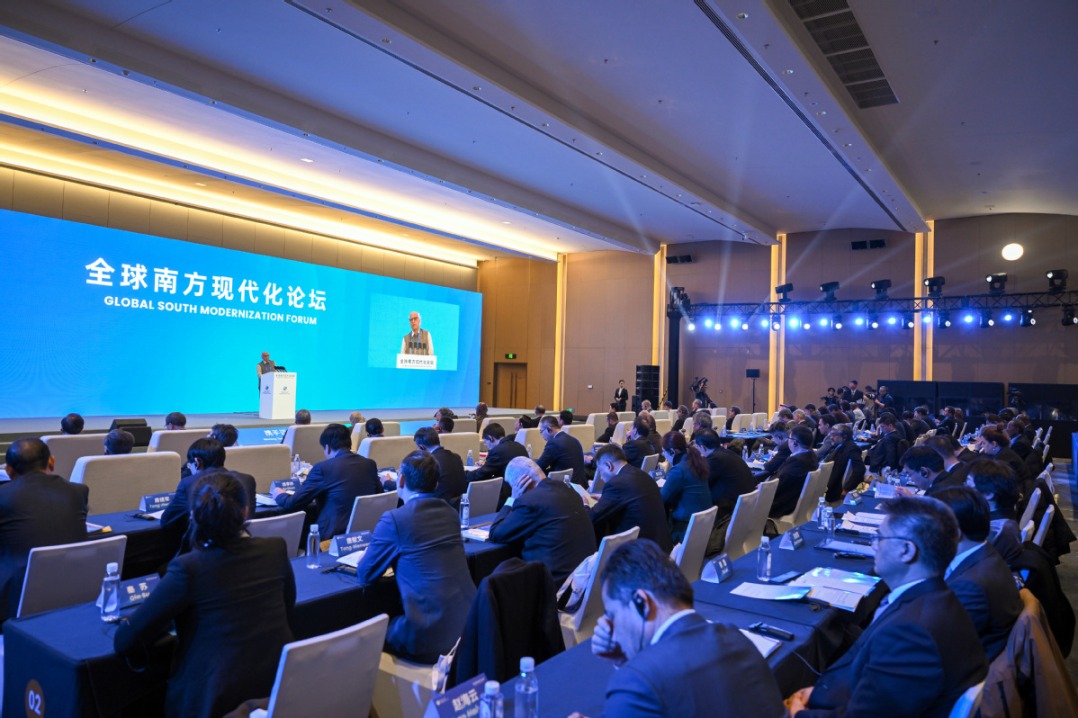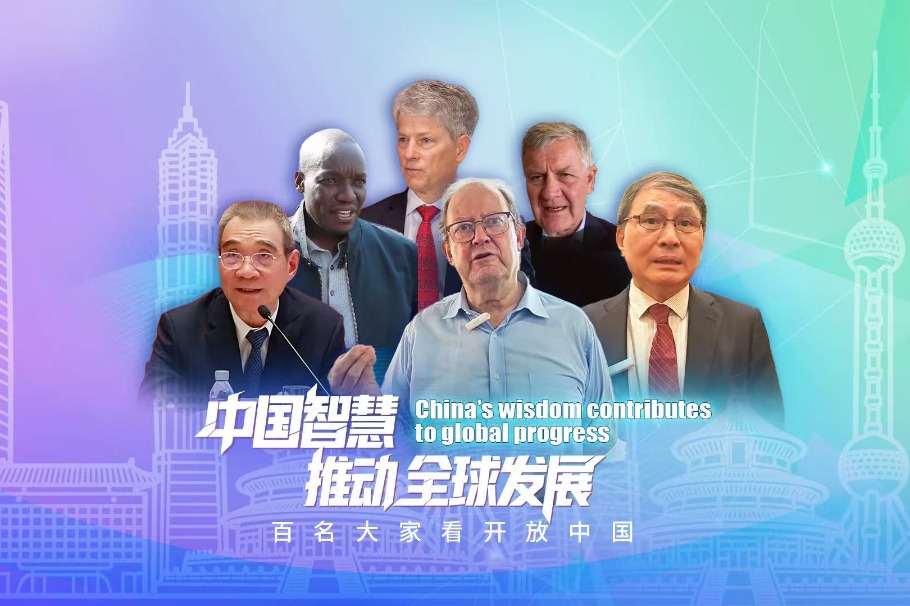Palace of secrets
TV crew produces intriguing documentary while uncovering stories of people who have protected the Forbidden City, Cheng Yuezhu reports.

The Forbidden City, with a history spanning six centuries, has continuously inspired a sense of mystery and fascination both at home and abroad.
A documentary about the ancient palace, Masters in the Forbidden City (2020), reveals the ins and outs of the site in modern times.
In celebration of the 600th anniversary of the Forbidden City last year, the documentary tells the amazing stories of the ancient architecture.
In previous centuries, builders and restorers of the palaces were largely unknown. They toiled anonymously. After the founding of the People's Republic of China in 1949, fortunately, restoration teams have had photos taken to mark their work and identities.
An old black-and-white photograph captures the first-generation restorers at the Forbidden City, in which the Palace Museum was established in 1925. These craftsmen took part in the restoration of the northwestern turret in 1956, a difficult task as the wooden structure of the building had fallen foul to rot caused by rain leakage.
The project required cooperation between researchers and craftsmen, but most of the people in the photograph are now deceased or unidentifiable.
To prepare for the 600th anniversary exhibition, Everlasting Splendor: Six Centuries at the Forbidden City, Xie Anping, a researcher at the museum and one of the curators for the exhibition, went on a journey to find the remaining, and now retired, senior preservation workers.
Li Runde, former deputy director of the museum's department of architectural heritage, helped to identify the people in the photo and recounted anecdotes about the renovation process.
"It was winter. In order to protect the turret, we took it down temporarily and built a shed around it. Passersby all thought the Forbidden City had suffered an 'accident' and the turret was demolished. But we all knew that the foundation we laid makes it handy for future restoration," Li recalls.
The restorers have passed their torch on to the future generations of researchers and craftsmen at the museum ever since.
Xia Rongxiang worked at the museum from 1975 to 2017 as a carpenter, and participated in the restoration of two turrets in 1981 and 1985.
"The first 10 years after entering the museum were a golden time to learn the techniques," Xia says. By the second turret restoration project, he was the chief carpenter.
"I am greatly obliged to my two mentors, who told me that handling wood is like handling a tiger, that I could not fear it, nor back away," he says. "Despite the challenges I encountered, I never thought of flinching and could only carry on with the task."
Since retirement, Xia has been hosting courses for young practitioners at the Palace Museum and recently, for the exhibition, he was invited back to help curate the woodwork exhibits.
The Chinese title of the documentary literally means "I am at the Forbidden City for six centuries".
"We have been thinking about who's the 'I'," says Liang Junjian, co-director of the documentary. "Apart from the architecture itself, it also means everyone who's been involved with the Forbidden City. Over the course of 600 years, many people have exerted an influence when inheriting its culture."
These people featured in the documentary include not only the researchers and the craftsmen at the Palace Museum, but also truck drivers who help to deliver building materials to the site. Much of the work is done after nightfall, hence the palaces are sometimes even more lively after dark than during the day.
The documentary has also included many sequences of visitors donning traditional attire and taking photos in front of the palace. Liang points out that they are also promoting the Forbidden City and traditional culture. Either as tourists or restorers, Liang says, everyone seems to have connections with the Forbidden City, one way or another, and through the historical landmark and space, we can connect to the past and the future. Such awareness is also a theme that the creative team tries to convey in the documentary, he adds.
Serendipitous findings during renovation work have often become surreal moments that bring the past rushing into the present.
For instance, when examining the Hall of Mental Cultivation, inspectors found, inside a ventilation brick, a program brochure for a traditional Chinese opera performance.
The ventilation bricks are an ingenious design whereby carved holes in the bricks allow the inner wood pillars to be dehumidified and maintained. The yellowed paper scroll was sealed inside one such brick more than 100 years ago.
Like a long-hidden time capsule, its chance discovery revealed the pieces performed and names of the performers for an imperial celebration of Lunar New Year.
Experts point out in the documentary that the brochure is one of its kind in the Palace Museum collection, with a high reference value for the research of traditional Chinese opera and imperial festival celebrations.
The documentary also has valuable footage of wall paintings hidden underneath the roof of the Hall of Ancestral Worship.
Thanks to the scaffold set up by the restorers within the hall, the film crew had access to the paintings hidden above the ceiling, enabling them to be able to capture the paintings on camera. The next time people will be able to physically get a view of these paintings will be centuries later, when the hall undergoes a full inspection once again.
"Ancient architecture is like a window into time and space. It can inadvertently unveil layers of historical information," Liang says, adding that the encounter with the wall paintings was a particularly memorable moment in the filming process.
"If architecture has a life of its own, individual human existence in comparison is transient and trivial. Architecture has the power to assemble the fragments of human lives into culture and history."
The documentary seems to have struck a chord with youngsters. With 3.7 million views to date on the Bilibili video streaming platform, which boasts a predominantly younger user base, it enjoys a rating of 9.8 points out of 10.
Meanwhile, on popular film and TV review site, Douban, Masters in the Forbidden City has posted a score of 9.1 out of 10. One of the top comments, by a user named Yu'an, says: "Amid the uncertainties of 2020, the Palace Museum has the ability to soothe people. In recent years there have been many shows and documentaries about the museum, but this documentary with its focus on ancient architecture preservation brought me new information and led me to the hidden corners."
Addressing the popularity of the documentary, Liang, who is also an associate professor of journalism and communication from Tsinghua University, gives his view on the likely reasons: "This is a documentary created from the perspectives of these ordinary people not often in the limelight, who are in fact extraordinary. They bring authenticity and affinity.
"Perhaps via these people and their devotion to their lifelong vocation, the audience can see a dialogue between individuals and history, and feel a sense of occasion and meaning in life."





Today's Top News
- Lawmakers' thousands of proposals receive responses
- China warns Japan against interference
- Nation's euro bond sale shows investors' confidence
- No soft landing for Tokyo's hard line
- Commerce minister urges US to increase areas of cooperation
- Strong demand for China's sovereign bonds signals global confidence






























